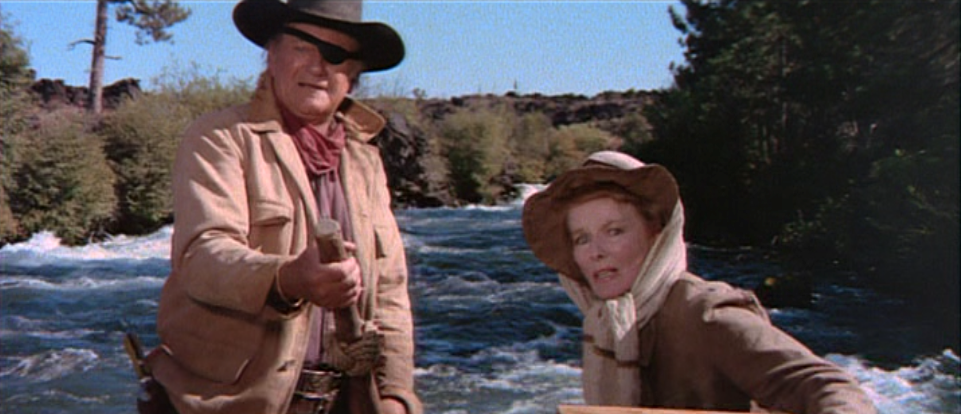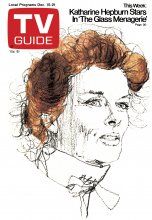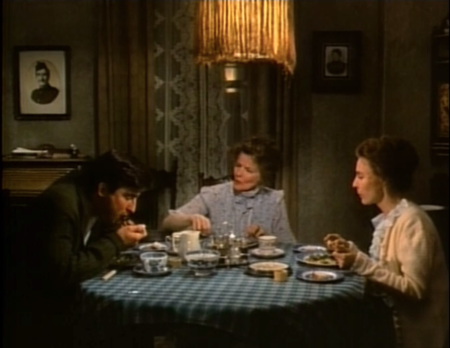A Year with Kate: Olly Olly Oxen Free (1978)
 Wednesday, October 22, 2014 at 5:00PM
Wednesday, October 22, 2014 at 5:00PM Episode 43 of 52: In which Katharine Hepburn proves she's not afraid of heights or bad scripts.
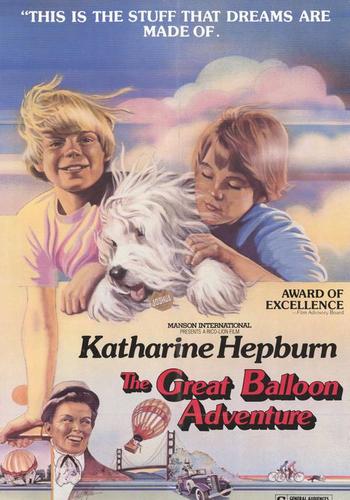 Look, I’ll be honest with you. There is exactly one reason to see this movie. It happens around the last third of the film. No, it’s not another moth gown. (Remember the moth gown? I miss the moth gown.) Instead, it’s the sight of a sexagenarian, award-winning, legendary actress dangling from a hot air balloon over a cliff. I’m in my 20s, and I wouldn’t do that without at least a net and a shot of whiskey first. Anyway, if you want to know what it looks like, I’ve made a gif that you can skip to at the end of the post. I suggest you stick around for the rest of this article, though, because we have some strange stuff to address (and also some puns).
Look, I’ll be honest with you. There is exactly one reason to see this movie. It happens around the last third of the film. No, it’s not another moth gown. (Remember the moth gown? I miss the moth gown.) Instead, it’s the sight of a sexagenarian, award-winning, legendary actress dangling from a hot air balloon over a cliff. I’m in my 20s, and I wouldn’t do that without at least a net and a shot of whiskey first. Anyway, if you want to know what it looks like, I’ve made a gif that you can skip to at the end of the post. I suggest you stick around for the rest of this article, though, because we have some strange stuff to address (and also some puns).
Really, of all the yet-untried genres Kate could have landed in during the later part of her career, we should have seen a children’s movie coming. Olly, Olly, Oxen Free (aka The Great Balloon Adventure) is a self-consciously sweet flick about a child named Albie with his head in the clouds (sorry) who recruits his friend and his dog to rebuild his grandfather’s hot air balloon. While looking for spare parts in a whimsical junkyard (junkyards in children's movies are required to be whimsical by genre law), Albie and Company meet the grouchy Miss Pudd, our own Kate. Fortunately for the boys, Miss Pudd’s threats turn out to be nothing but hot air (sorry), and she quickly becomes their confidante and benefactor.
Olly, Olly, Oxen Free is part of that genre of children’s fantasy (like Pete’s Dragon, The Goonies, or even Bridge to Terabithia) that sees the world of a child as a vanishing, secret thing. While the “scrappy kids in a magical world” trope is common enough, this inflated (sorry) level of preciousness seems unique to the 1970s. The movie’s tone is almost mournful. The only adults who understand these boys--Miss Pudd and Albie’s grandfather--are insane or dead. The rest are either absent or rude.
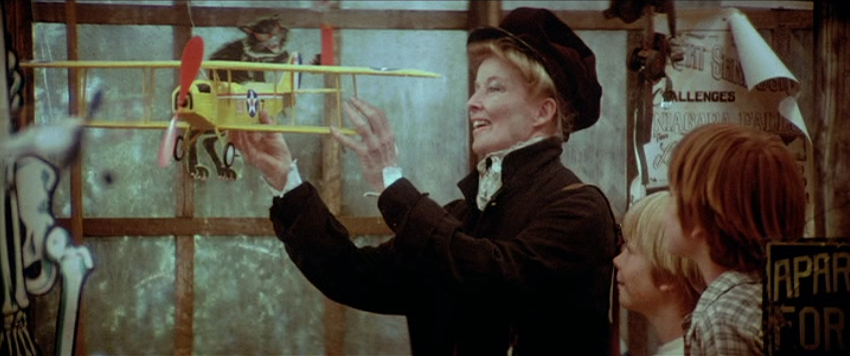 "Did I ever tell you about the time Howard Hughes landed a plane on a beach just to meet me?"
"Did I ever tell you about the time Howard Hughes landed a plane on a beach just to meet me?"
More balloon jokes and an impressive stunt after the jump.




